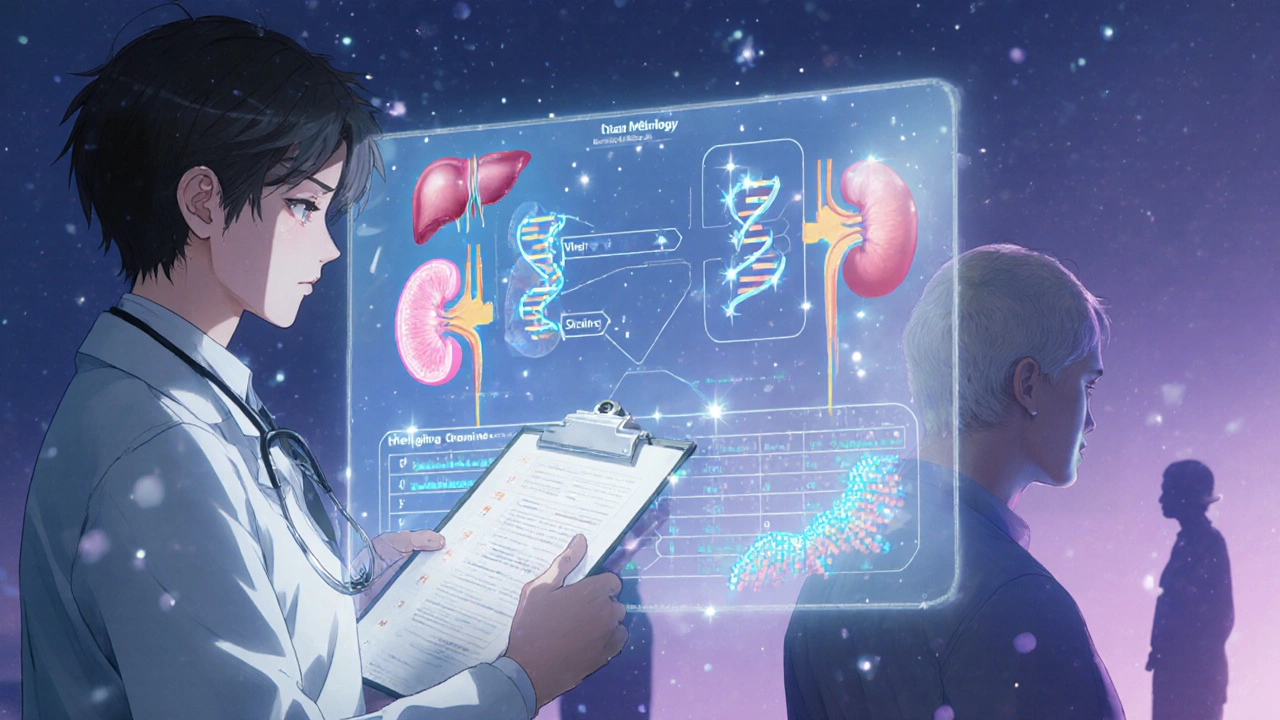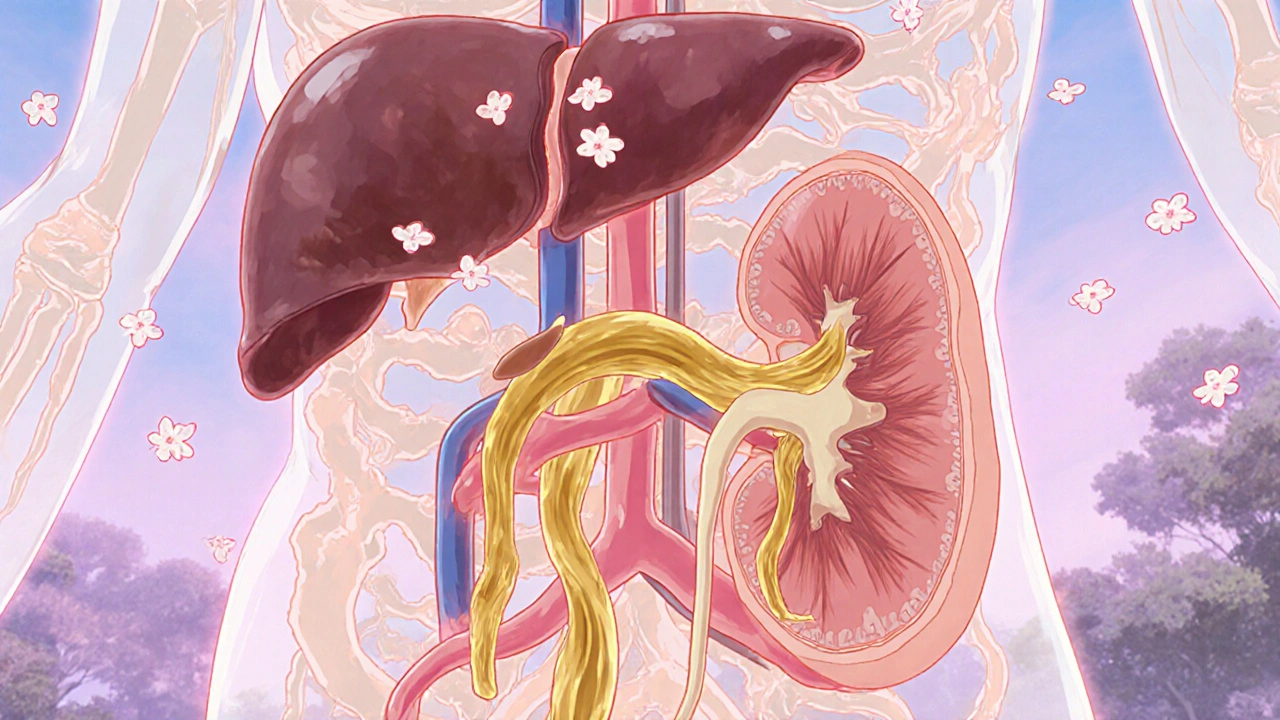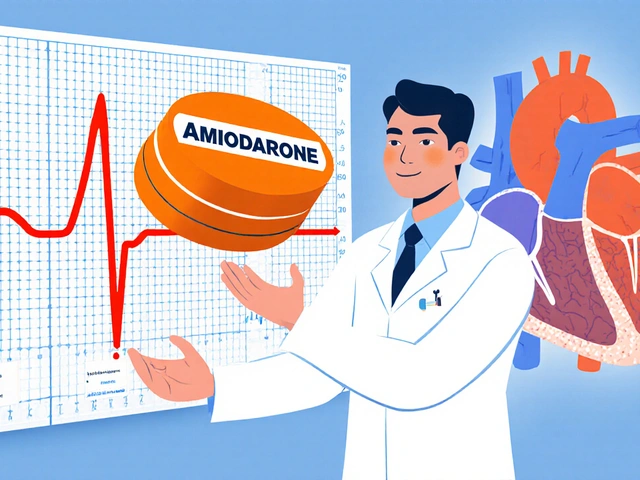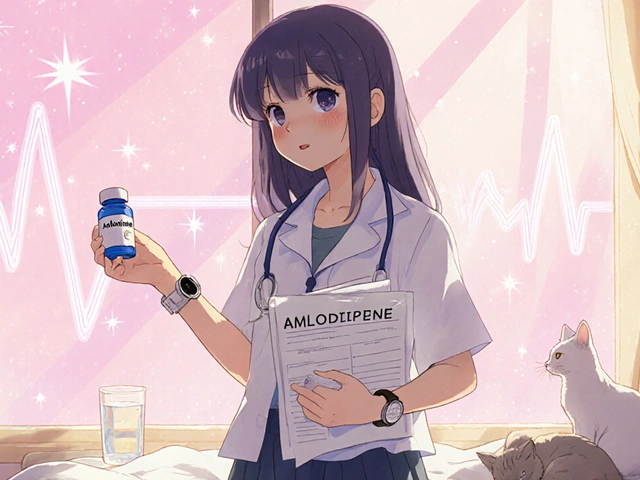When you’re 70, your body doesn’t process medicine the way it did at 30. That’s not just a myth-it’s science. And it’s why so many older adults end up in the hospital not because their illness got worse, but because their pills started working too well-or too long.
Why Your Liver Slows Down with Age
Your liver is your body’s main drug factory. It breaks down medicines so your body can get rid of them. But as you get older, that factory doesn’t run the same way. Between ages 30 and 80, liver blood flow drops by about 40%. Liver mass shrinks by 30%. That means less blood reaches the liver, and there’s less tissue to do the work.That’s a big deal for drugs like propranolol, morphine, and lidocaine. These are called flow-limited drugs-they depend on how fast blood flows through the liver. When blood flow drops, these drugs stick around longer. Their clearance drops by nearly half. That means a dose that was safe at 50 could cause dizziness, low blood pressure, or even heart rhythm problems at 75.
Other drugs, like diazepam or phenytoin, are capacity-limited. They rely more on enzyme activity than blood flow. The good news? The enzymes that break these down-called cytochrome P450-don’t always decline as much as we thought. Some studies show only a 10-15% drop in clearance for these drugs. But here’s the catch: not all enzymes behave the same. CYP3A4, which handles over half of all prescription drugs, tends to slow down. CYP2D6? Some recent studies say it might not change much at all. That inconsistency is why blanket rules don’t work.
Kidneys Don’t Just Filter-They Signal
Your kidneys are even more predictable in their decline. Between 30 and 80, your glomerular filtration rate (GFR)-the gold standard for kidney function-plummets by 30 to 50%. That’s not a slow fade. It’s a major drop. And it hits hard for drugs that leave the body through urine: antibiotics like vancomycin, diuretics like furosemide, and painkillers like gabapentin.Here’s where things get tricky: doctors often check serum creatinine to judge kidney health. But in older adults, muscle mass drops. That means creatinine levels can look normal-even when the kidneys are barely working. A 78-year-old woman might have a creatinine of 1.1 mg/dL, which looks fine. But if she’s lost 20% of her muscle, her real GFR could be half of what the lab says. That’s why using the CKD-EPI equation (without race adjustments) is now the standard. It gives a more accurate picture.
And here’s something many don’t realize: when kidneys slow down, the liver can slow down too. Studies show that kidney impairment can reduce liver enzyme activity, even if the liver itself is healthy. So a drug cleared mostly by the liver might still build up because the kidneys aren’t signaling properly. It’s a two-organ problem, not just one.
Prodrugs and the Hidden Trap
Some medicines don’t work until your body turns them into something else. These are called prodrugs. Examples include perindopril (a blood pressure pill) and codeine (a painkiller). Your liver converts them into their active form. But if your liver’s slowed down, that conversion doesn’t happen well. You might take your pill and feel nothing-so you take another. That’s when toxicity hits.On the flip side, drugs with high first-pass metabolism-like verapamil or propranolol-get broken down heavily the first time they pass through the liver. In older adults, that first-pass effect weakens. That means more of the drug enters your bloodstream. A 40 mg dose of verapamil that was fine at 55 could deliver 60 mg worth of active drug at 75. That’s not a mistake. That’s physiology.

What Happens in Real Life
It’s not theoretical. In the U.S., 10% of hospital admissions for people over 65 are caused by bad reactions to drugs. That’s tens of thousands of people every year. And it’s not just about taking too much. It’s about taking the wrong dose for your body.One Reddit user, ‘CaregiverInMA’, shared how their 82-year-old mother started on amitriptyline for nerve pain. Standard dose: 25 mg. Within days, she was falling, dizzy, confused. Her doctor assumed it was dementia. But when they checked her liver and kidney function, they realized her body was holding onto the drug like a sponge. They cut the dose to 10 mg. Within a week, she was back to normal.
Another case from the Journal of the American Geriatrics Society showed a 78-year-old man on vancomycin. His creatinine was 1.3-seemed okay. But his real GFR was 35 mL/min. He was getting a standard dose. His blood levels spiked. He nearly lost his kidneys. Only after switching to a GFR-based dosing system did he stabilize.
And it’s not just prescriptions. Acetaminophen (Tylenol) is the #1 cause of acute liver failure in older adults. Why? Because people think it’s safe. But with reduced liver function, even 3,000 mg a day can be dangerous. The FDA recommends no more than 2,600 mg daily for seniors. Most don’t know that.
What Doctors Should Do-And Often Don’t
The Beers Criteria®-the gold standard for safe prescribing in older adults-says: start low, go slow. For drugs cleared by the liver, reduce the starting dose by 20-40%. For those over 75, go even lower. But many doctors still use the same doses they’d give a 40-year-old.Doctors also forget to ask about over-the-counter meds. Older adults often take ibuprofen for arthritis, melatonin for sleep, or herbal supplements like St. John’s Wort. All of these interact with prescription drugs. St. John’s Wort can cut blood thinner levels in half. Ibuprofen can wreck kidneys already stressed by age.
Tools like the Cockcroft-Gault and CKD-EPI equations exist to help. But many clinics still use outdated formulas. And the START/STOPP criteria-evidence-based lists of what to prescribe and what to avoid-aren’t used in most primary care offices. A 2020 meta-analysis showed that when these tools are used, adverse drug events drop by 22%.

The Future Is Personalized
We’re moving away from “age-based” dosing. The new frontier is physiology-based dosing. The FDA approved GeroDose v2.1 in 2023-a software tool that simulates how a drug will behave in your body based on your age, weight, liver enzymes, and kidney function. It’s not magic. But it’s better than guessing.Researchers are also looking at epigenetics. A 2023 study found 17 DNA methylation sites linked to CYP3A4 activity that change as we age. That means two 75-year-olds can metabolize the same drug completely differently. One might need half the dose. The other might need the standard. That’s precision medicine-and it’s coming fast.
The National Institute on Aging has committed $150 million over the next four years to study this. The goal? Cut adverse drug events in older adults by 35-50% by 2030. That’s not just a number. That’s lives saved.
What You Can Do Right Now
If you or someone you care for is over 65 and taking more than three medications:- Ask your doctor: “Is this dose right for my liver and kidneys-not just my age?”
- Request a GFR test (not just creatinine).
- Bring every pill you take-including vitamins, herbs, and OTCs-to every appointment.
- Ask if any drug can be stopped. Polypharmacy (five or more meds) increases risk of bad reactions by 88%.
- Know the signs: dizziness, confusion, falls, nausea, fatigue. These aren’t “just getting older.” They could be drug toxicity.
You don’t need to be a doctor to ask these questions. You just need to know your body isn’t the same as it was 20 years ago. And that’s okay-as long as your meds know it too.








8 Comments
Ravi Kumar Gupta
November 23, 2025 AT 21:28Man, this is so true in India too. My uncle was on warfarin and his doctor kept giving him the same dose for years. He started falling all the time-thought it was his balance. Turned out his liver couldn’t process it anymore. They cut the dose and he’s walking like a 40-year-old now. Why do doctors still treat old people like they’re just slow versions of young ones? It’s lazy.
And don’t even get me started on turmeric supplements. Everyone thinks it’s harmless. It messes with blood thinners like crazy. We need a national awareness campaign, not just Reddit posts.
Rahul Kanakarajan
November 24, 2025 AT 13:25Wow. Another ‘old people are fragile’ article. Newsflash: everyone ages. The real problem is doctors who don’t update their knowledge since 1998. I’ve seen 80-year-olds on 50mg of amitriptyline like it’s candy. And they wonder why they’re confused all day. It’s not dementia-it’s pharmacology ignorance.
Also, acetaminophen is the silent killer. 3000mg? Bro, that’s a death wish. 2600mg is the max. Why is this not on every pharmacy label?
New Yorkers
November 25, 2025 AT 08:18Look, I’m from New York and I’ve seen grandmas on 12 different meds. One took ibuprofen for her knee, gabapentin for nerve pain, lisinopril for BP, melatonin, fish oil, vitamin D, and St. John’s Wort because ‘it’s natural.’
She ended up in the ER with a TIA because the St. John’s Wort killed her blood thinner. The doctor said ‘it’s just a supplement.’ No, buddy. It’s a drug. And your liver doesn’t care if it’s ‘natural’ or not. It just wants to live.
David Cunningham
November 26, 2025 AT 03:36Been a nurse for 22 years in Sydney. This stuff? Everyday. We had a guy on vancomycin, creatinine looked fine, but his GFR was 30. He was getting the full dose. His kidneys started shutting down. We switched to GFR-based dosing and he walked out a week later.
Simple fix. But hospitals still use the old creatinine-only method. It’s not that hard. Just run the CKD-EPI. Takes 30 seconds. Why don’t they?
luke young
November 27, 2025 AT 07:42Really appreciate this breakdown. I’m a caregiver for my dad and I had no idea about the liver-kidney connection. He was on propranolol and started getting dizzy. We thought it was his heart. Turns out his liver wasn’t clearing it. We cut the dose and he’s back to gardening.
Also, I didn’t realize OTC stuff like melatonin or ibuprofen could be so risky. I’m bringing his whole pill bottle to his next appointment. Thanks for the clarity.
james lucas
November 27, 2025 AT 16:51soooo many people dont realize that just because a drug is old doesnt mean its safe for old people. like tylenol? everyone thinks its harmless but its actually the #1 cause of liver failure in seniors. and they just keep taking it because ‘its just pain relief’
and dont even get me started on benzos. diazepam? my aunt took it for 15 years. she was falling all the time. doc said ‘you’re just getting old’ nope. it was the drug. we tapered her off and she got her balance back. it’s not magic. it’s science. but docs are too busy to care.
also st johns wort? it cuts blood thinners in half. like literally. my neighbor almost had a stroke because she was taking it with warfarin. she thought ‘natural’ meant ‘safe’. nope. natural can kill too.
Jessica Correa
November 29, 2025 AT 09:25My mom is 79 and on 7 meds. I didn’t know half of them were risky until I read this. We just started asking for GFR tests instead of creatinine and wow. Her numbers were way off. The doctor was shocked. He said ‘we always go by creatinine’
And I brought her supplement list-turmeric, omega-3, magnesium-and he said ‘oh that’s fine’ and I said ‘but the turmeric interacts with her blood thinner’ and he paused and said ‘you’re right’
It’s so frustrating that we have to be the ones to know this stuff. We shouldn’t have to be pharmacists too
manish chaturvedi
December 1, 2025 AT 09:24This is a well-researched and critically important overview. In India, the issue is compounded by over-the-counter availability of potent medications and a cultural reluctance to question medical authority. Many elderly patients take multiple prescriptions from different specialists without coordination.
Additionally, the use of Ayurvedic and herbal remedies without disclosure to physicians remains widespread. These often contain undisclosed pharmacologically active compounds that interact with modern drugs, leading to unpredictable toxicity.
It is imperative that geriatric pharmacology be integrated into medical curricula and that primary care systems adopt standardized tools like CKD-EPI and Beers Criteria. Patient education must be culturally adapted and delivered in local languages. Lives depend on it.